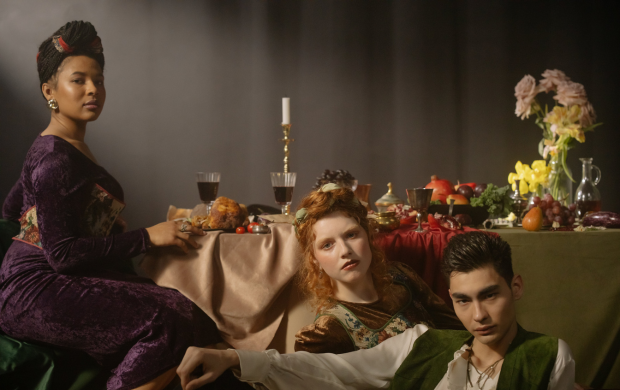Prom and homecoming in 2026 give students more freedom than ever to express themselves through fashion. Styles range from bold statement pieces with animal prints and cutouts to sleek slip dresses and timeless black gowns. The best way to make a statement is to choose an outfit that reflects personal style while balancing comfort, confidence, and creativity.
Trends continue to push both ends of the style spectrum. Some lean toward bright colors, ruffles, and playful details, while others embrace minimal shapes and monochrome looks. This mix allows each person to decide whether to stand out with eye-catching designs or keep it simple with clean lines and subtle accents.
Fashion in 2026 is not about following one standard but about showing individuality. Accessories, hairstyles, and makeup all play a role in finishing the look. By combining current trends with personal taste, students can create outfits that feel memorable and true to who they are.
Key Ways to Make a Statement with Your Prom and Homecoming Outfits
Standing out at prom or homecoming often comes down to choosing the right outfit, using bold colors with intention, and adding accessories that reflect personality. Each choice works together to create a look that feels stylish, confident, and memorable.
Choosing Standout Dresses and Outfits
The foundation of a statement starts with the dress or suit itself. A well-fitted gown or tailored suit sets the tone for the entire outfit. Styles such as ball gowns, mermaid silhouettes, or sleek sheath dresses each create different levels of formality and drama.
Students often look for unique details like lace overlays, sequins, or structured designs that add interest. For those who want a wide variety of styles, browsing prom dresses at JJ’s House can provide options that range from classic elegance to modern trends.
Venue and event theme also influence the choice. A black-tie inspired prom may call for sophisticated evening wear, while a more casual homecoming might suit shorter dresses or playful textures. The key is to balance comfort with style so the outfit feels natural to wear throughout the night.
Incorporating Bold Colors and Metallics
Color plays a major role in making an outfit stand out. Deep jewel tones such as emerald, sapphire, or burgundy create a striking look under event lighting. Pastels like blush or lavender give a softer, more romantic effect, while black always delivers timeless appeal.
Metallic finishes add an extra layer of impact. Gold and silver fabrics reflect light and draw attention without needing heavy embellishment. Rose gold has also become popular for its balance of warmth and shine. Students who want something different may try iridescent or multitone fabrics that shift color in motion.
Pairing bold shades with neutral accessories helps keep the outfit balanced. For example, a cobalt blue dress with nude or black shoes maintains focus on the main color without overwhelming the look. The goal is to use color as the centerpiece rather than competing elements.
Personalizing Your Look with Accessories
Accessories give an outfit individuality and can transform a simple dress into something memorable. Jewelry choices often depend on the neckline of the dress. A strapless gown pairs well with a statement necklace, while detailed necklines work better with earrings or bracelets.
Shoes should combine style with comfort. High heels remain a popular choice, but block heels or sleek flats allow easier movement for dancing. A clutch bag in a matching or metallic shade provides both function and a polished finish.
Hairpieces, belts, or even detachable capes can add a unique twist. Some students also personalize their look with subtle custom touches, such as embroidery or a favorite color accent in their accessories. These small details help the outfit feel personal and distinct without overwhelming the main style.
Dress Codes, Comfort, and Styling for Lasting Impact
Prom and homecoming outfits stand out most when they respect the event’s dress code, feel comfortable enough for a full night, and include thoughtful styling choices. Attention to detail in fit, accessories, and footwear often makes the difference between a good look and a memorable one.
Understanding Prom and Homecoming Dress Codes
Prom usually follows a formal dress code, which means tuxedos, full suits, or long gowns. A homecoming dress code is often semi-formal, allowing shorter dresses, stylish jumpsuits, or a sharp blazer with dress pants. Some schools allow casual looks, but even then, clean and polished pieces matter.
Students should confirm their school’s rules before buying outfits. A dress code violation can lead to last-minute stress. For example, overly revealing cuts or sneakers may not pass at a formal event.
The safest approach is to match the formality level while adding personality through fabric, color, or subtle prints. A sleek black tuxedo with a patterned tie works well for prom, while a bold floral dress or a modern jumpsuit fits the vibe of a semi-formal homecoming outfit.
Balancing Comfort and Fashion
Comfort plays a direct role in confidence. A fitted dress or suit should allow easy movement for dancing, photos, and socializing. Too-tight clothing may look sharp at first but often feels restrictive after a few hours.
Fabric choice also matters. Breathable materials like cotton blends or lighter satins help avoid overheating under gym or ballroom lights. Stretch panels in dresses or adjustable waistbands in trousers can also reduce discomfort.
Shoes deserve equal attention. For example, block heels provide stability on the dance floor, while strappy stilettos create a sleek look but may cause pain after long wear. Some students bring backup flats to stay comfortable without sacrificing style.
Comfort does not mean casual. A well-fitted suit or structured dress can look polished and still allow freedom of movement. The goal is to feel confident without constant adjustments.
Styling Tips for Accessories and Footwear
Accessories complete the look and help express personality. A pair of statement earrings can draw attention upward, while a layered necklace or a bold statement necklace adds interest to a simple dress. However, too many large pieces at once can overwhelm the outfit.
Color coordination works best through small details. For example, a tie that echoes the shade of a partner’s dress or earrings that match shoe accents create a cohesive look without being overly matched.
Footwear should balance style with practicality. Dress shoes in neutral tones work well with suits, while metallic or jewel-toned heels add sparkle to dresses. Students who expect to dance for hours may choose block heels or wedges for stability.
A simple clutch, cufflinks, or a sleek belt can add polish without distracting from the main outfit. Accessories should highlight the outfit, not compete with it.
Conclusion
Prom and homecoming outfits in 2026 highlight individuality while respecting each event’s unique style expectations. Students can choose bold prints, bright colors, or timeless classics to reflect their personality.
Accessories, fit, and comfort remain just as important as the main outfit. Small details like shoes, jewelry, or jackets often decide whether a look feels polished or incomplete.
Trends may shift each year, but confidence and authenticity always leave the strongest impression. By balancing personal taste with event guidelines, students create looks that feel memorable and true to themselves.








